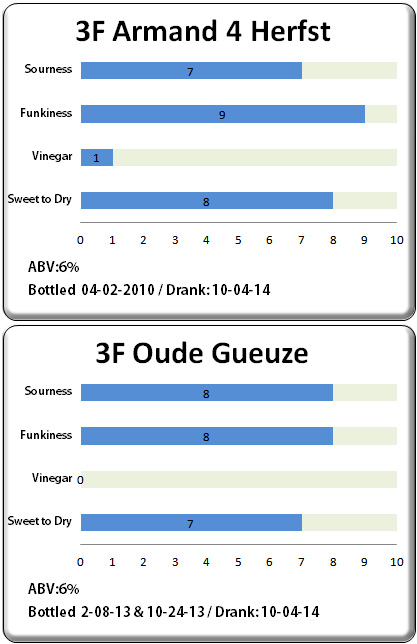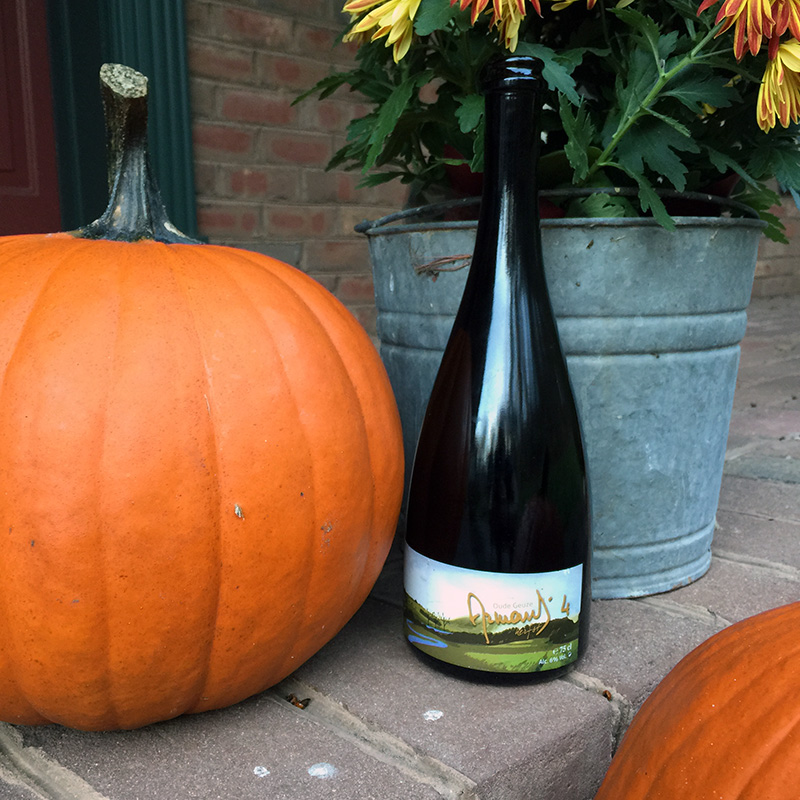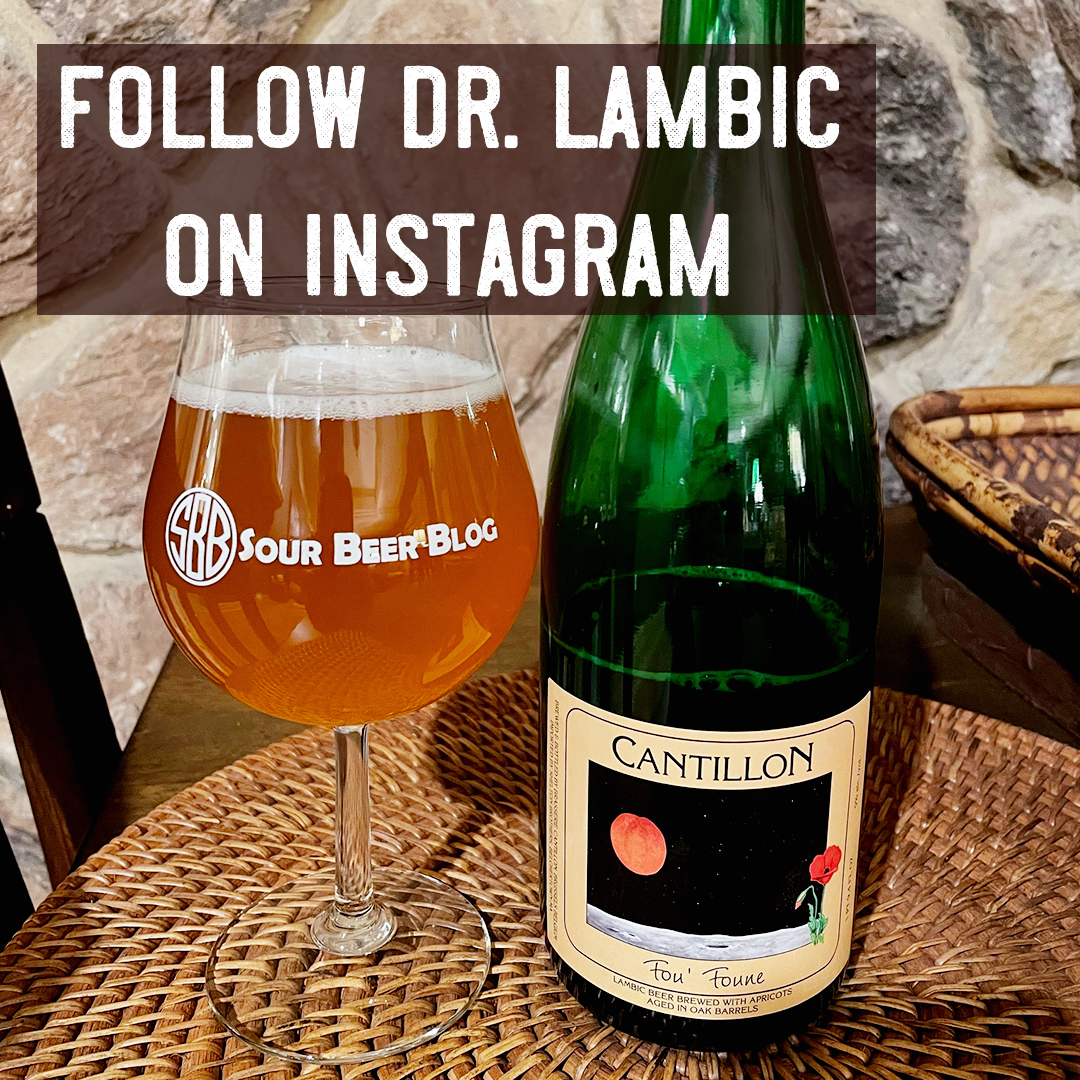Hello Sour Beer Friends!
 Autumn is upon us in the northern hemisphere and with the change of seasons comes new weather and new opportunities to have a round of sour beers with friends! Today I would like to share with you our tasting of Armand 4 Herfst, a special release gueuze from Drie Fonteinen’s master blender Armand Debelder. In 2010, the “Armand 4 Seasons” gueuzes were released to help get the iconic lambic brewery back on its feet after a major thermostat catastrophe resulting in the loss of thousands of bottles of gueuze and fruit lambic awaiting sale. Luckily, both the proceeds from special projects such as this and support from Drie Fonteinen’s loyal customers have given the brewery a very promising future.
Autumn is upon us in the northern hemisphere and with the change of seasons comes new weather and new opportunities to have a round of sour beers with friends! Today I would like to share with you our tasting of Armand 4 Herfst, a special release gueuze from Drie Fonteinen’s master blender Armand Debelder. In 2010, the “Armand 4 Seasons” gueuzes were released to help get the iconic lambic brewery back on its feet after a major thermostat catastrophe resulting in the loss of thousands of bottles of gueuze and fruit lambic awaiting sale. Luckily, both the proceeds from special projects such as this and support from Drie Fonteinen’s loyal customers have given the brewery a very promising future.
We have opened one gueuze from this boxed set with the change of each season this year. Make sure to check out our reviews of Armand 4 Lente (Spring) and Armand 4 Zomer (Summer) as well! A few weeks ago, following shortly after this year’s Cantillon Zwanze Day, a few friends and I got a chance to taste Armand 4 Herfst (Autumn). This time we chose to drink the seasonal gueuze beside Drie Fonteinen’s standard Oude Gueuze.
 As with each bottle from the series, the Armand 4 Herfst was carbonated to champagne-like levels and poured to form a gigantic pillowy off-white head. Intensely funky aromas immediately followed! These included sharp lactic acid, tailgate exhaust, leaf decay, burnt rubber, wet cork, and a papery note that reminded us of carbon copy sheets. In comparison, the aromas from 3F’s classic Oude Gueuze were softer and fruitier. We detected softer lactic acid notes, malt aromas that reminded us of Munich malt (think of a Munich Dunkel), air popped popcorn, a light hop skunkiness, and fruit notes of white peaches and pears.
As with each bottle from the series, the Armand 4 Herfst was carbonated to champagne-like levels and poured to form a gigantic pillowy off-white head. Intensely funky aromas immediately followed! These included sharp lactic acid, tailgate exhaust, leaf decay, burnt rubber, wet cork, and a papery note that reminded us of carbon copy sheets. In comparison, the aromas from 3F’s classic Oude Gueuze were softer and fruitier. We detected softer lactic acid notes, malt aromas that reminded us of Munich malt (think of a Munich Dunkel), air popped popcorn, a light hop skunkiness, and fruit notes of white peaches and pears.
When tasting these beers, both were strongly flavored and showcased the Drie Fonteinen house character. In terms of overall sourness, the Oude Gueuze was actually a bit more acidic than the Herfst. The souring in Herfst was still quite strong and had a slight touch of acetic acid (vinegar) in its profile. The younger Oude Gueuze was completely free of acetic acid and was profiled with a very intense level of lactic souring.
There was a notable level of grain astringency present in the Herfst and this boosted the mouthfeel and complexity of the already complex beer. Additionally, the Brettanomyces funk in Herfst was pretty much at the top of the potential scale… this was a very funky beer! Notes of diesel fuel, sherry, dried flowers, wet grass, musty earth, and leaf decay were all present. These flavors were backed up with a definite wheat malt presence and a fairly high level of hop bitterness for a gueuze. We also picked up on light metallic/zinc and mineral water flavors in the beer. These seemed to sharpen and accentuate the hop bitterness. More subtle, but most definitely present, were flavors of peaches and apricots, as well as stone-fruit pits, almonds, and sulphur.
 In contrast, the Oude Gueuze had softer and more rounded flavors overall. Fruit notes that reminded us of Asian pears as well a light pale malt sweetness were tasted. Wood tannins, acidic flavors of bile, grain astringency, vegetal & grassy hops, and a slight alcohol presence were noted. Additionally, we picked up on some buttery popcorn flavor in one of the bottles, evidence that there may have been some diacetyl present. It is worth noting that as a group we drank 2 different bottlings of Oude Gueuze and that one of these had significantly softer and more pleasant flavors compared to the other. The less-pleasant bottle seemed to have more off-flavors, including diacetyl, oxidation, sharper (more bile-like) acidity, and a more vegetal hop profile. There were still plenty of positive flavor attributes in this bottle, but it is a good example of how a beer should not always be judged from a single bottle. Bottle-to-bottle and batch-to-batch variation is possible with any beer, even world-class lambics.
In contrast, the Oude Gueuze had softer and more rounded flavors overall. Fruit notes that reminded us of Asian pears as well a light pale malt sweetness were tasted. Wood tannins, acidic flavors of bile, grain astringency, vegetal & grassy hops, and a slight alcohol presence were noted. Additionally, we picked up on some buttery popcorn flavor in one of the bottles, evidence that there may have been some diacetyl present. It is worth noting that as a group we drank 2 different bottlings of Oude Gueuze and that one of these had significantly softer and more pleasant flavors compared to the other. The less-pleasant bottle seemed to have more off-flavors, including diacetyl, oxidation, sharper (more bile-like) acidity, and a more vegetal hop profile. There were still plenty of positive flavor attributes in this bottle, but it is a good example of how a beer should not always be judged from a single bottle. Bottle-to-bottle and batch-to-batch variation is possible with any beer, even world-class lambics.
Both beers were very dry on the palate (although the Herfst was slightly drier) and had a medium body with high carbonation. Drie Fonteinen’s Oude Gueuze, their most commonly produced beer, is a wonderful example of the style and well worth seeking out whenever its available. This is one that you will always find in my cellar!
 Continuing the trend of excellence within the Armand 4 Seasons series, the Herfst Gueuze was a delicious, complex, and unique example of the style. While certainly open to subjectivity, each season’s blend has seemed to capture various aspects of that season, and the Autumn blend was no exception. The earthy, musty Brettanomyces flavors and aromas seemed to combine with assertive hopping in a way that reminded us of fallen leaves just beginning to break down. This blend was definitely funk-forward, with the acidity playing more of a supporting role. Herfst would be an awesome gueuze to enjoy with a big Thanksgiving meal or other harvest-time feast. The first three gueuzes from this series have each been completely unique and a pleasure to drink. I highly recommend trying any of them if ever given the opportunity. I am very excited to taste the final bottle from the set this winter! Stay tuned!
Continuing the trend of excellence within the Armand 4 Seasons series, the Herfst Gueuze was a delicious, complex, and unique example of the style. While certainly open to subjectivity, each season’s blend has seemed to capture various aspects of that season, and the Autumn blend was no exception. The earthy, musty Brettanomyces flavors and aromas seemed to combine with assertive hopping in a way that reminded us of fallen leaves just beginning to break down. This blend was definitely funk-forward, with the acidity playing more of a supporting role. Herfst would be an awesome gueuze to enjoy with a big Thanksgiving meal or other harvest-time feast. The first three gueuzes from this series have each been completely unique and a pleasure to drink. I highly recommend trying any of them if ever given the opportunity. I am very excited to taste the final bottle from the set this winter! Stay tuned!
Cheers!
Matt






